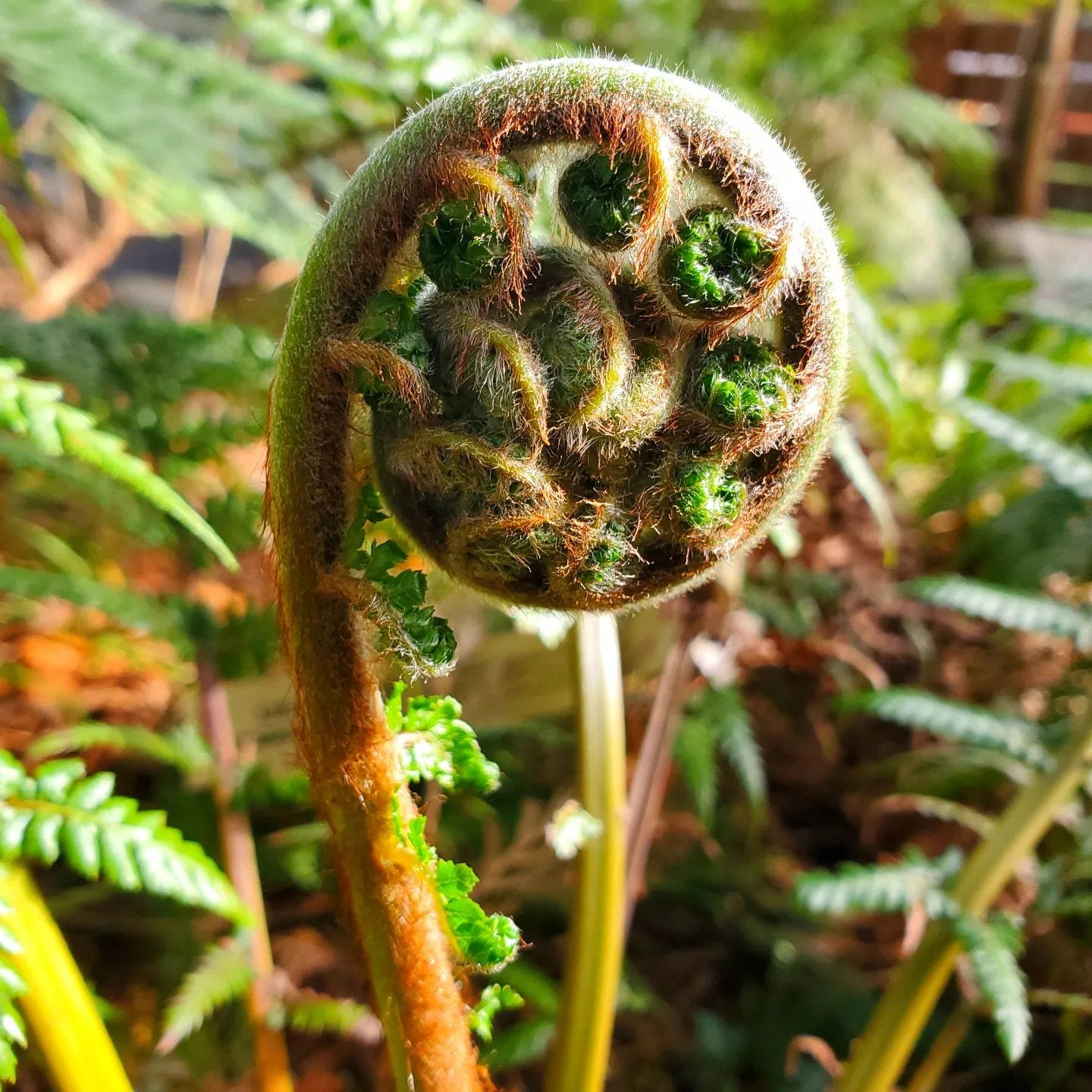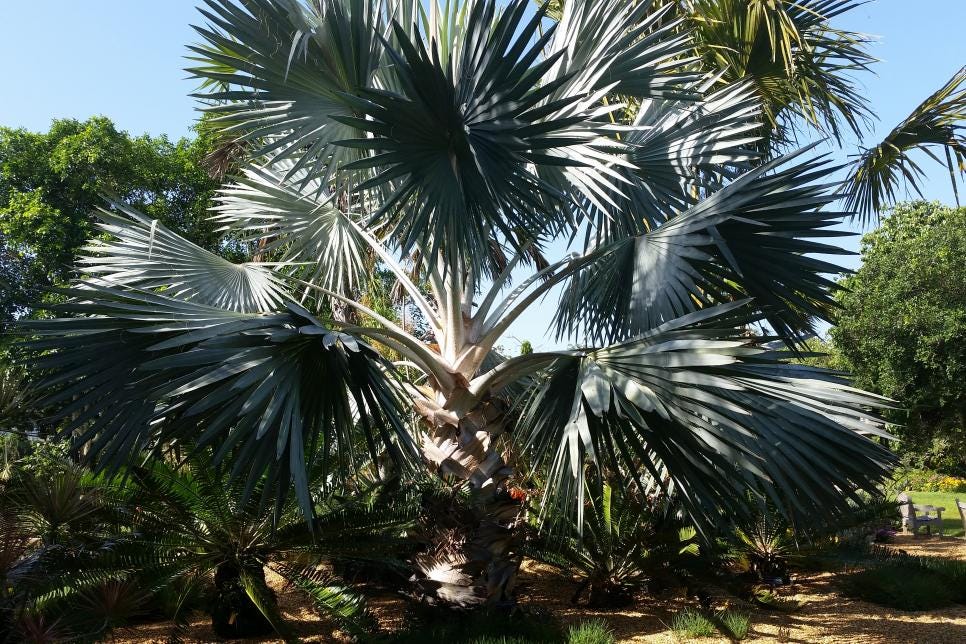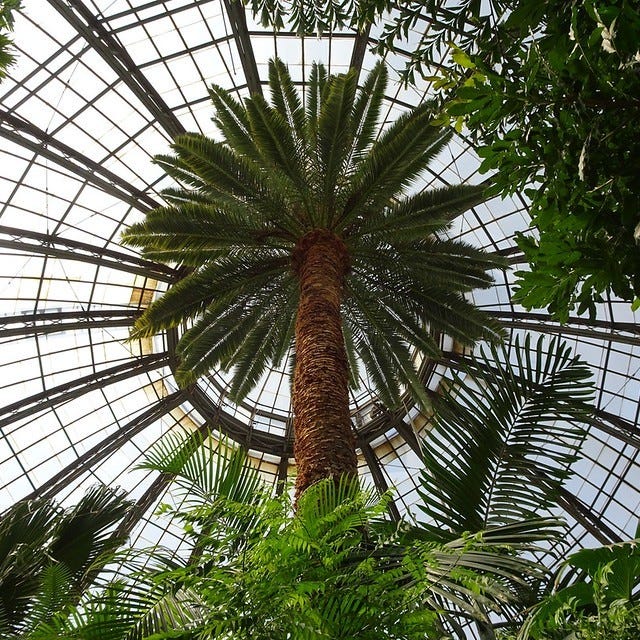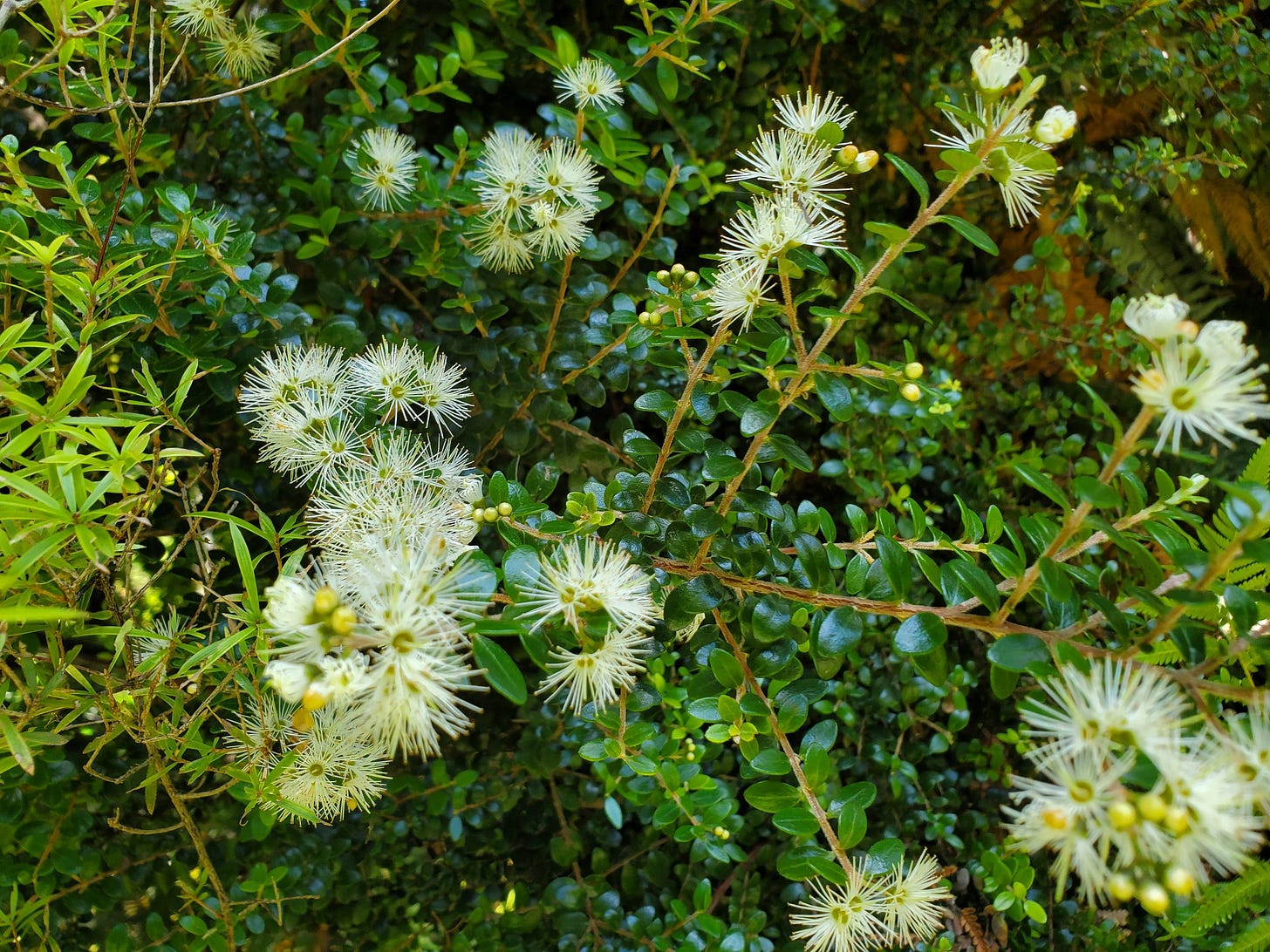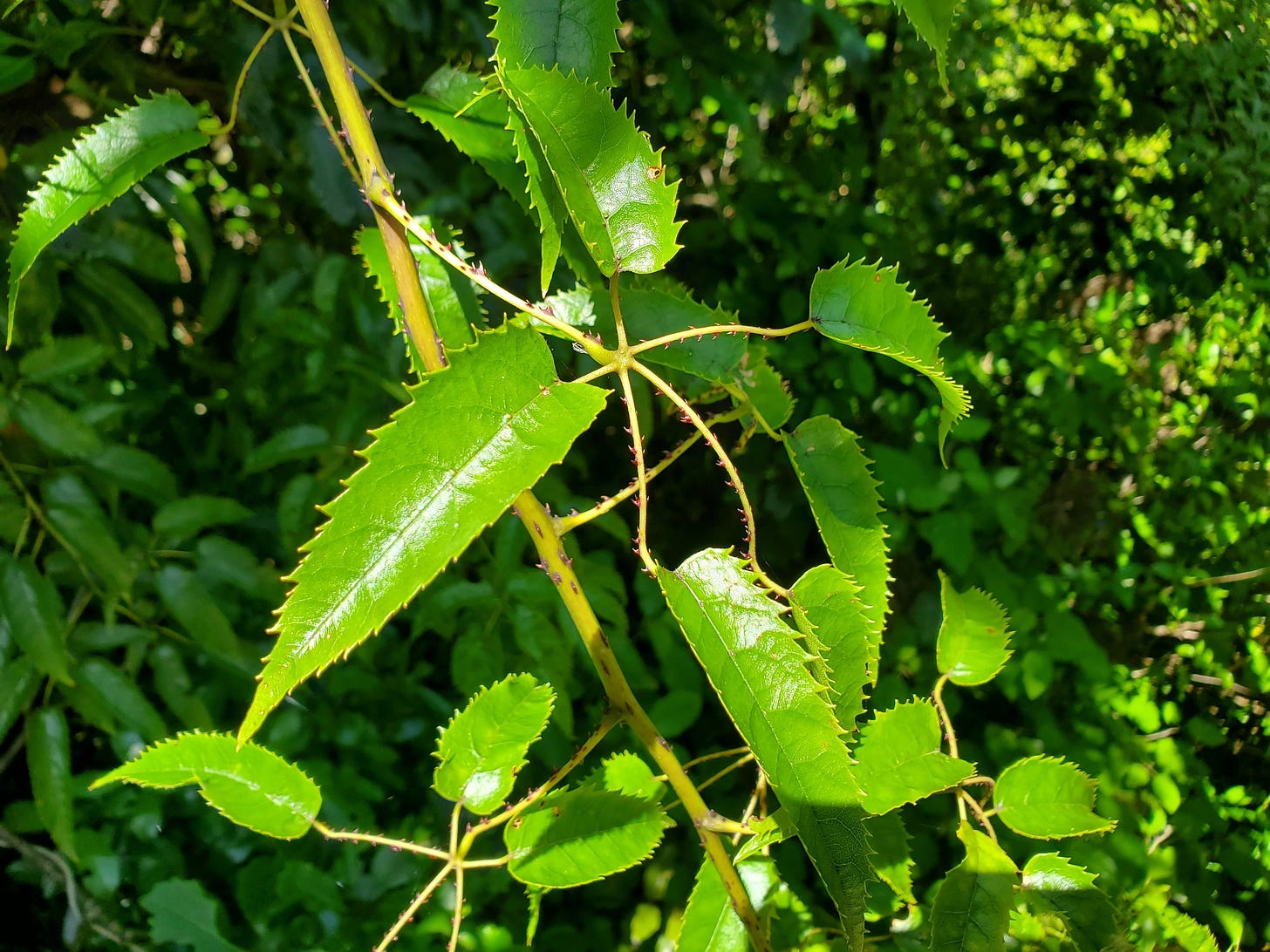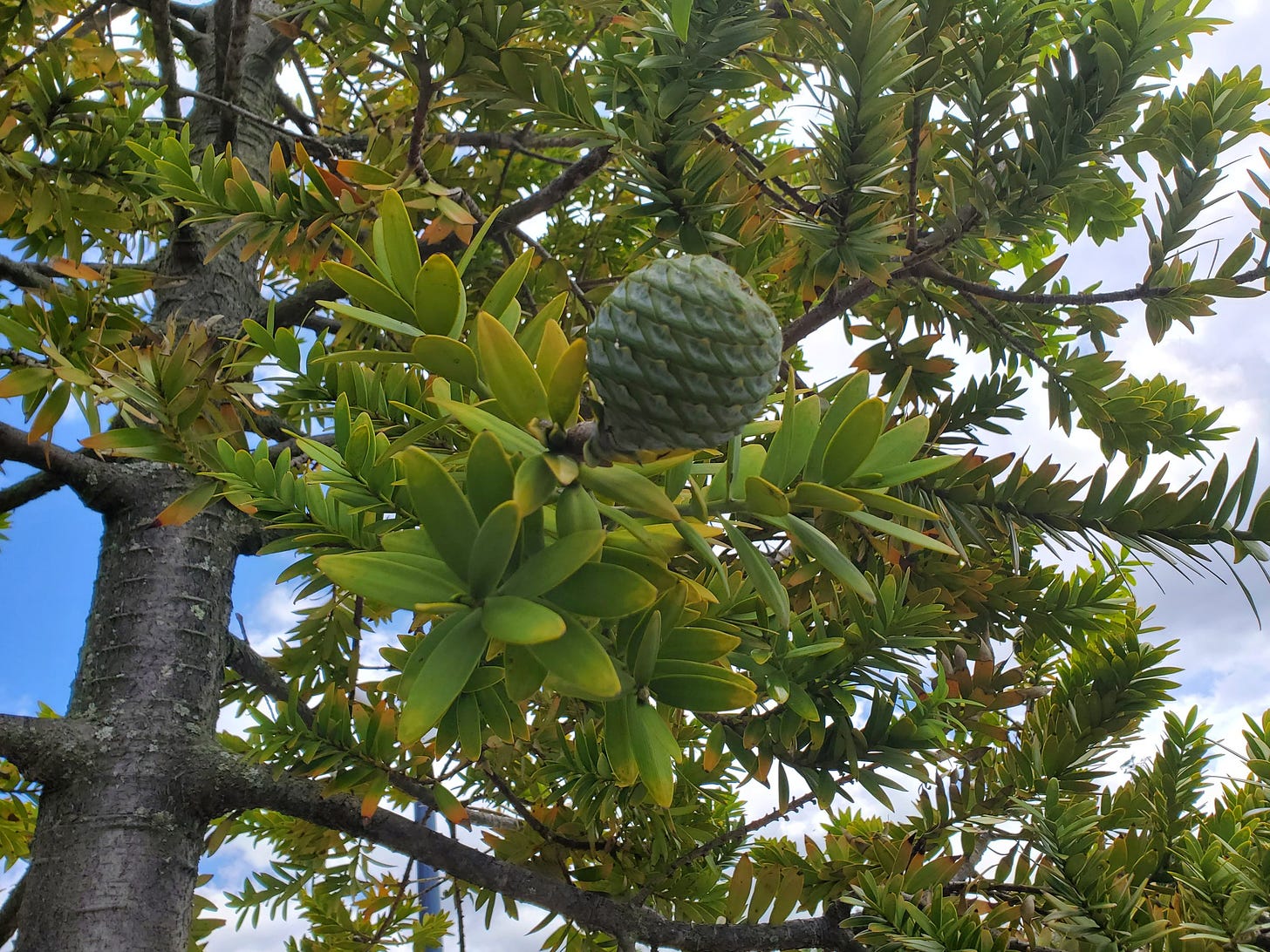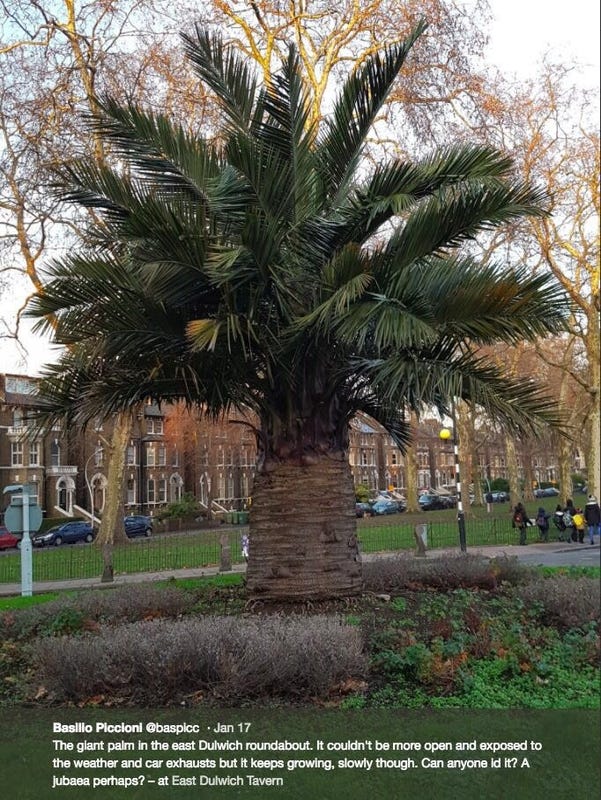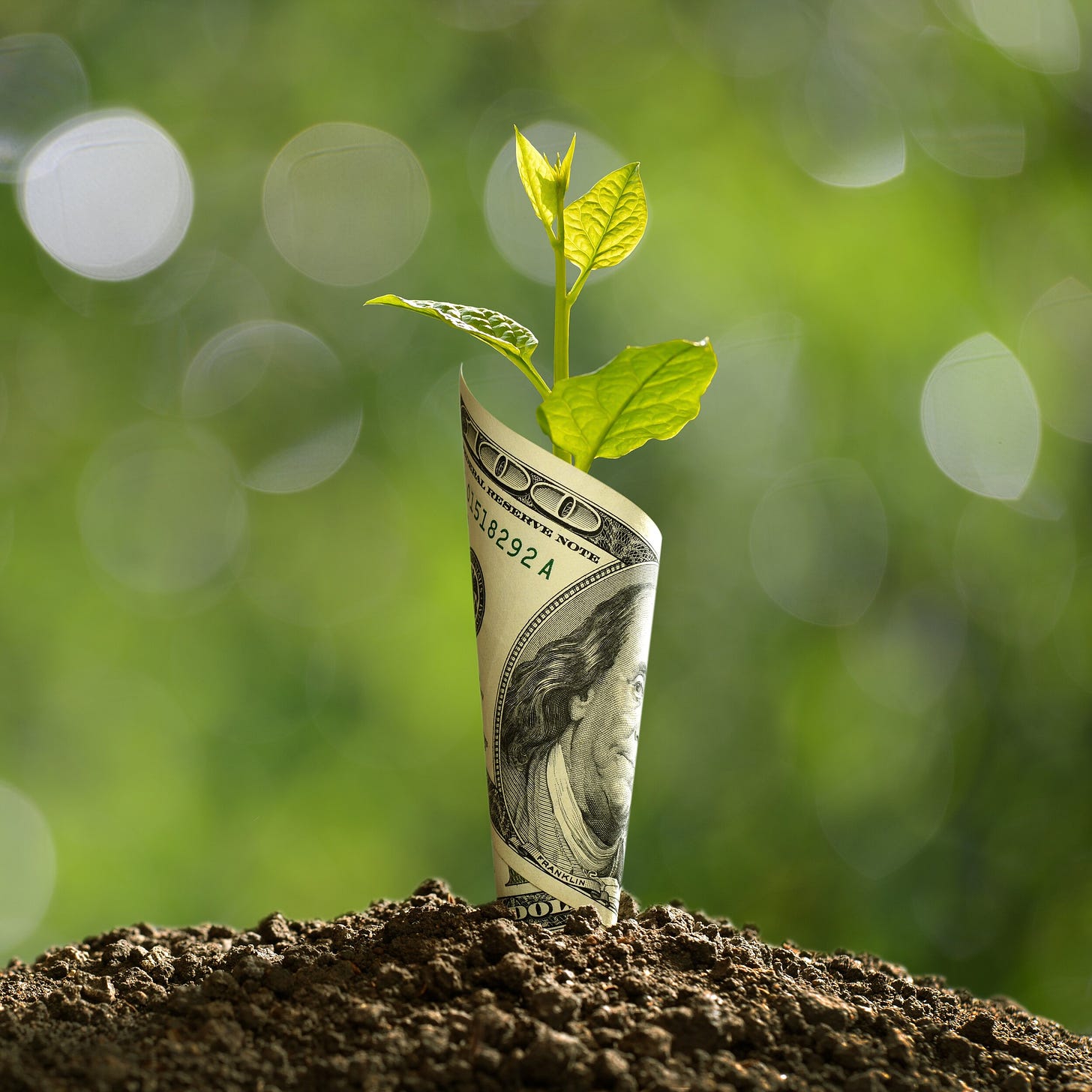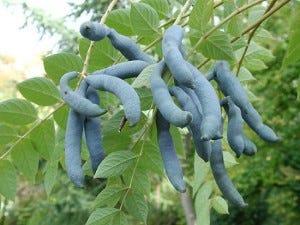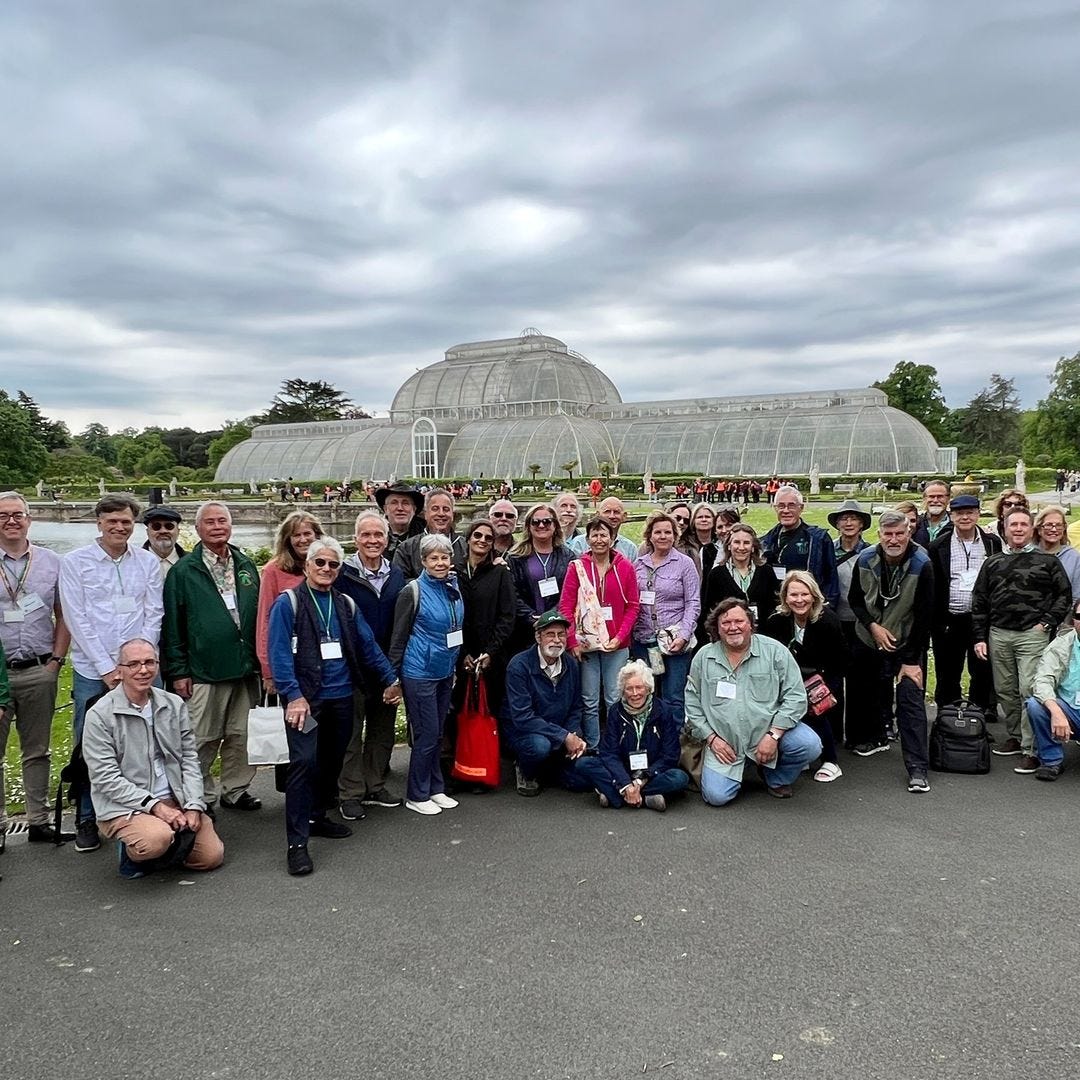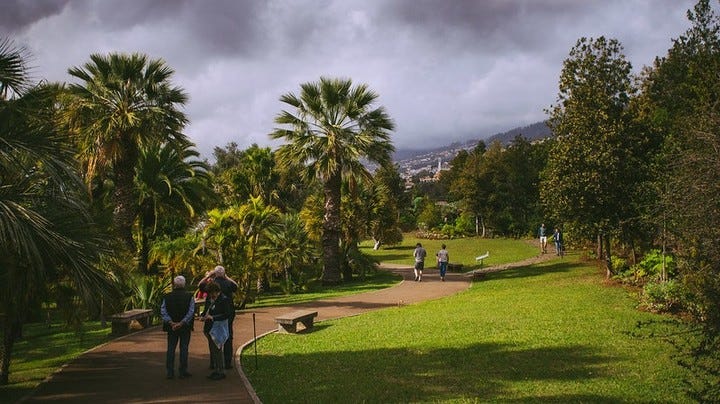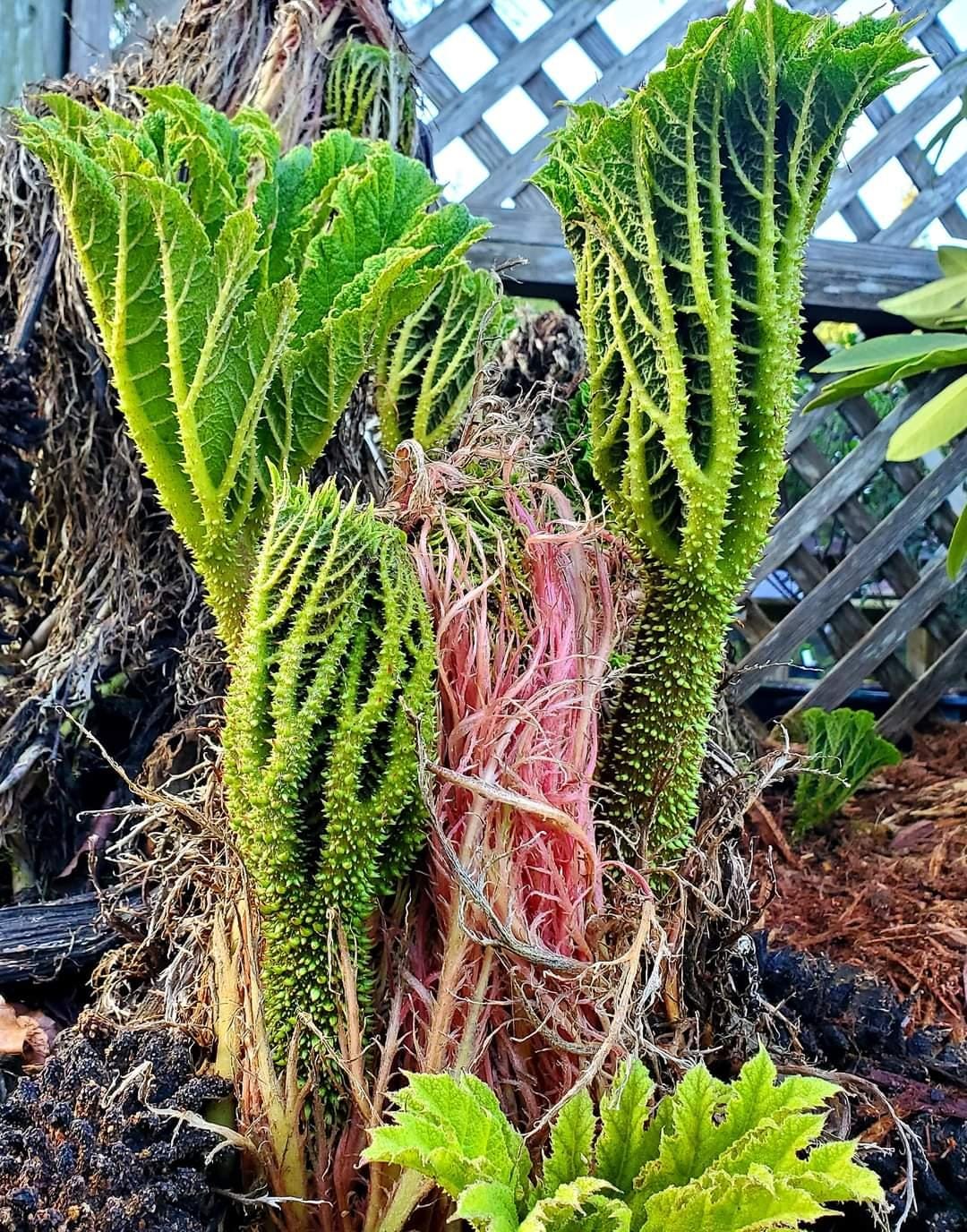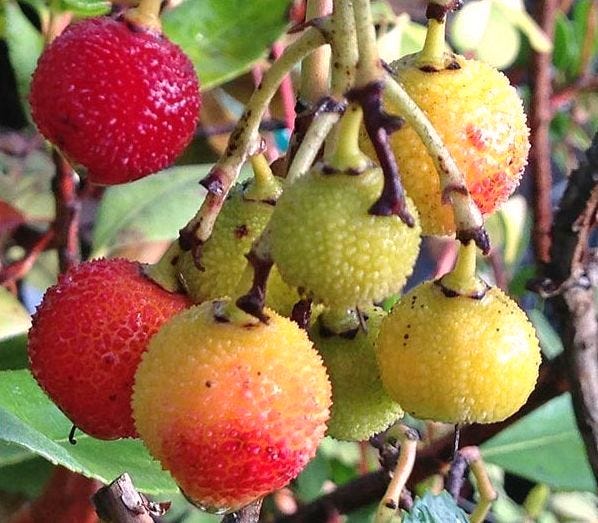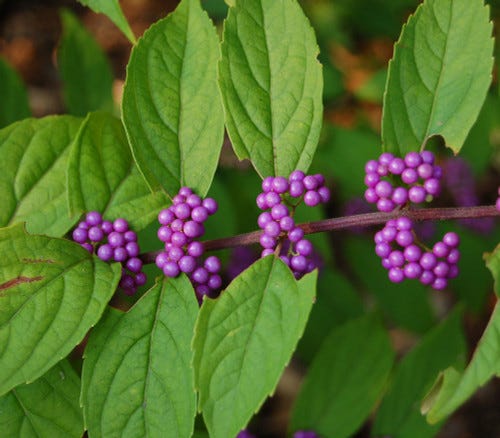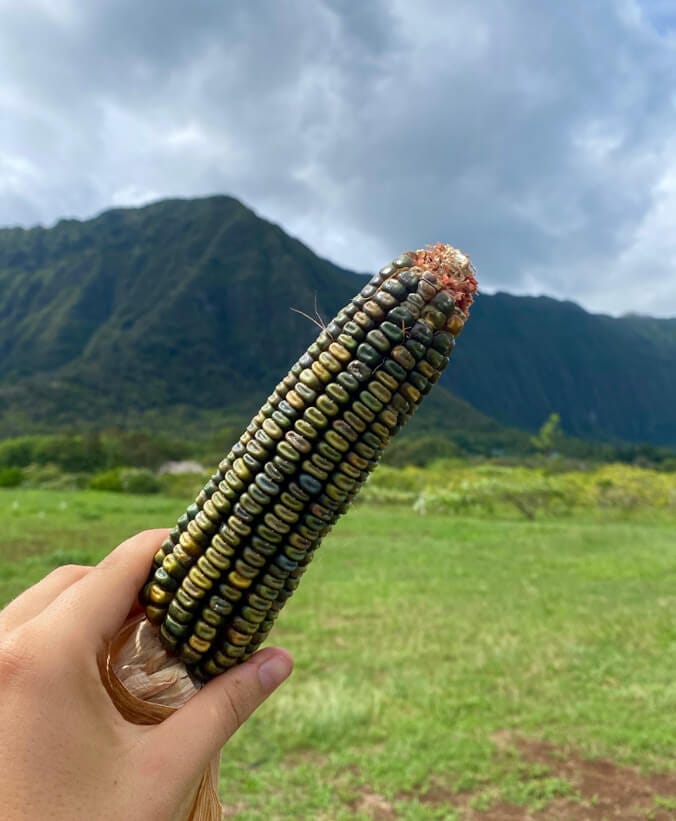Create a tropical garden even if you live in a low-temperature hardy zone!
Tasmanian Tree Fern
Dicksonia antarctica
Dicksonia antarctica the much loved and most often planted tree fern in the British Isles is without doubt one of the most impressive ferns available to gardeners with spectacular large evergreen fronds up to 3 metres long held on a stout fibrous trunk. Often known as the Tasmanian Tree Fern it is naturally found growing from South Eastern Australia through to Tasmania.
It’s thought that the original specimens arrived in the British Isles as ballast on the hulls or merchant ships and were discarded in parts of the West Country such as Falmouth where they were seen to sprout new fronds. Fortunately this was spotted by enterprising gardeners and the trunks were rescued, subsequently planted and now flourish in many of the great Cornish gardens often naturally by spores, producing genuine home-grown tree ferns.
Ideally suited to shady, sheltered locations and high rainfall and generally hardy to -5°, Dicksonia Antarctica is relatively easy to grow.
https://www.fancyfrondsnursery.com/ferns/dicksonia-antartica-tasmanian-tree-fern
Bismarck Palm Tree (Bismarckia nobilis)
If you want drama in your landscape, plant silvery bismarck palm. This beauty is native to Madagascar and survives temps as low as 15°F, which means it can grow in places like Nevada, Texas, Arkansas and Alabama. This isn’t a palm for small yards—it needs elbow room. Plants grow 50 to 60 feet tall and up to 20 feet wide. Young trees develop the full width while the trunk is still short, spreading up to 20 feet. Plant Bismarck palm against dark leaved evergreens so the silver leaves can sparkle.
Sago Palm Tree (Cycas revoluta)
This isn’t a true palm, but it has the tropical look of a palm and can take temps down to 5°F. Also known as king sago, it’s a living fossil, having existed when dinosaurs roamed. It’s native to Japan and commonplace in warm region landscapes. The secret to success with it is providing sharp drainage. Use sago palm with palms, in rock gardens or as a patio plant. The leathery leaves indicate drought tolerance.
https://en.wikipedia.org/wiki/List_of_hardy_palms
Temperate Rainforests of New Zealand
We’ve recently returned from travelling throughout New Zealand and wanted to share our experience traversing the remote island nation, from a decisively botanical perspective. We were awestruck by the dramatic landscapes and otherworldly ecosystems that dotted the North and South islands, varying from dense temperate rainforests to vast tussock grasslands to rugged alpine scree. It would be silly to think we could cover the entirety of the flora of New Zealand in a series of blog posts, but at a minimum we’d like to highlight some of the notable experiences from our 2023 excursion.
New Zealand Flora at a Glance
The flora and fauna of New Zealand are unique in that they are rich in endemic species that can’t be found anywhere else in the world. Separation from other large landmasses over many millions of years has allowed the wildlife of New Zealand to evolve in isolation. To make a long story short, the islands of New Zealand were once part of a supercontinent known as Gondwana which included what is now New Zealand, Australia, South America, Africa, Antarctica, and India. From this perspective, there are many plant families from these modern regions that share common ancestry that are often called Gondwanan, or more broadly the Antarctic Floristic Kingdom. This is important context in that many of these ancient plant lineages have lost their global diversity and now are represented by so-called ‘relict taxon’ that have no few or no close living relatives. One great example of this phenomena is the family Asteliaceae, containing a total of 38 species in 3 genera, which can only be found in New Zealand, Australia, some Pacific Islands and the southern tip of South America.
Temperate Rainforests
Temperate rainforests can be found in several regions around the world, characterized by high rainfall, cool and moderate climates, diverse canopies and vibrant understories of mosses, ferns, and shrubs. New Zealand’s temperate rainforests mostly lie in the western half of the islands where the westerly winds provide copious precipitation that often struggles to cross the mountains of the interior. There are different ecosystems within the rainforests of the country; some are mixed broadleaf and others coniferous, although uniquely they are all predominantly evergreen. Despite having cool winters that occasionally experience freezing temperatures in the lowlands, very few species native to New Zealand are winter deciduous.
A curious collection of forest vines are the “Bush Lawyers”, Rubus subgenus Micranthobatus. Purportedly, these plants earned this unusual name because once their thorns become attached to you they will not let go until they’ve drawn blood. This subgenus of evergreen brambles consists of five species that can only be found in New Zealand. While these are formidably spiny plants, some breeding work has already created varieties that are becoming popular in gardens within the country. Rubus x barkeri is a naturally occurring hybrid that was identified in the wild and which makes a fine groundcover that is apparently sterile.
The canopies of New Zealand’s temperate rainforests can arise from a number of tree species, but none of them as magnificent as the Southern Kauri, Agathis australis. The Southern Kauri is a truly breathtaking species, touted as the world’s second largest tree species by volume, usurped only by the Giant Sequoia (Sequoiadendron giganteum). While there are several species of Agathis found throughout Oceania today, all have narrow native regions and have been extensively exploited for logging in recent history. Belonging to the Araucariaceae, the Kauri’s closest relatives outside of Agathis include the Wollemi Pine (Wollemia nobilis) and the Araucaria of Australia, New Caledonia, Chile, Argentina, and Brazil.
Unlike other conifers, Kauri have leaves instead of needles
Learn more & acquire specimens:
https://wanderlustnursery.com/blog/new-zealand-natives
Chilean Wine Palm
Jubaea chilensis
The Chilean Wine Palm, also called the Coquito Palm or Chilean Cocopalm, is arguably the largest palm tree in the world and one of the most cold hardy. It can grow in temperate and subtropical climates to eventually reach up to sixty feet in height with a trunk up to six feet in diameter, although a diameter of three to four feet is more typical .
The Chilean Wine Palm is endangered under the IUCN largely due to naturally-occurring and human-caused habitat destruction. Vast groves of trees have been felled for their sweet palm sap, traditionally use to make a potent libation. This palm produces miniature walnut-sized coconuts, or ‘coquitos’, which taste just like their full sized cousin. Don’t expect any coquitos for some time though, as this palm is notoriously slow growing, first growing wide before it begins to trunk and grow upwards. Plant one now for your children to enjoy!
https://wanderlustnursery.com/shop/products/p/chilean-wine-palm
Their original Latin name was Jubaea spectabilis. They are indeed spectabilis.
Propagated from seed.
As with all woody plants, plant high, exposing as much of the taper at the base of the trunk as possible. Allowing soil to accumulate round the base of a tree can be fatal. Keep very well watered when first planted.
Wanderlust Nursery gift card, click here:
Have you ever watched a sci-fi movie and thought to yourself, 'gee what would a plant from that alien planet look like'? Well it would probably look something like our Blue Sausage Tree, Decaisnea fargesii. This strange shrub grows tall, weeping, and waxy canes with tropical looking foliage that give way to truly bizarre blue fruit in fall. The fruit is edible and the plant is cold hardy and just out of this world!
https://wanderlustnursery.com/shop/products/p/blue-sausage-tree-dead-mans-fingers
#aliens #ufo #botany #botanicalpickmeup #rareplants #plantnerd #springbreak #spring #springiscoming #plantsofinstagram #plantstagram #plantstore #jungle #growyourown #permaculture #ediblelandscaping #eattheworld #eatyourgreens #wanderlust
https://www.instagram.com/wanderlustnursery/
Decaisnea fargesii: True Ghoul Blue
This is a frost-hardy shrub that likes cooler weather and is native to the Himalayas and Western China where it can be found from 6,000 to 10,000 feet. In the United States it is found in zones 6 to 10, or down to about -10° F. You can find it in landscaping in such diverse locales as Kentucky and Ohio to Oregon and Washington. It is also escaping into the wild. It’s main calling as an ornamental is that it has blue, edible, fruit. Other than the fruit, to a North American eye the shrub resembles a small black walnut
Dead Man's Digits
Whether there are one or two species of Desaisnea is a bit of a debate. Some say the D. fargesii is from China with the blue fruit, and others say there is a Decaisnea insignis from India with yellowish fruit. The Chinese one, D. fargesii, is the most commonly cultivated and thus escaped into the countryside. Oddly, it is in the chocolate vine family, Lardizabalaceae. The fruit’s white, juicy phlegm-like pulp, ranges from bland to very sweet. The watermelon-like seeds are not eaten.
The genus name is no help at all in identification. Decaisnea ( deh-KANE-ee-uh) is named for Joseph Decaisne, a 19th century Belgian-born French botanist, horticulturist, and director of the Jardin des Plantes Paris. The species fargesii (far-GHEE-zee-eye) was “discovered” and named for Pere Paul Guillaume Farges (1844-1912) a French missionary and plant collector who lived in China. I always have a problem with a westerner “discovering” a plant. The locals there had been eating or using it for thousands of years. The D. fargesii is also called Blue Sausage Fruit, Blue Cucumber Shrub and Blue Bean Tree. And if you are wondering, Lardizabalaceae is said lahr-dee-zab-uh-LÂ-see-ee.
Oh, and to add to the fun, the fruit ripens around Halloween.
https://www.eattheweeds.com/decaisnea-fargesii-true-ghoul-blue-2/
Aloha from Hawaii and the 32nd International Palm Society Biennial.
This is the first of a two-part survey of breathtaking private palm gardens visited on the Big Island of Hawaii.
In this issue, we discover the wonder of Casa De Las Palmas, as well as present our final installment of a six-part series recognizing the 24 former presidents of the International Palm Society.
Aloha from Hawaii and the 32nd International Palm Society Biennial. Whether it’s fine art, automobiles, or even palms, the best collectors rely on years of study and travel to advance their connoisseurship.
The largest palm collection in a public garden in North America is at University of Hawaiʻi at Mānoa’s Lyon Arboretum. This recognition was recently verified by the American Public Gardens Association.
The arboretum’s 2,519 individual palm trees represent 615 unique species. Lyon Arboretum’s Grounds and Collections Department is working to increase the collection’s diversity through material exchanges, partnerships with the Department of Land and Natural Resources Division of Forestry and Wildlife, and collection trips made possible by donors.
How palms got to Lyon
From 1919 to 1943, Harold L. Lyon, with the help of Joseph F. Rock and others, brought 134 palm accessions (addition of a new item to a collection) representing 98 unique species to the arboretum. Many of these original plantings, including the Royal Palm Grove, are still thriving on the grounds. Former Grounds and Collections Manager Ray Baker augmented this collection, which greatly raised the number of individual palm trees to more than 2,500.
International Palm Society visit
The size of Lyon Arboretum’s palm collection attracted the attention of the International Palm Society (IPS), which visited the arboretum for its 2022 biennial tour. Approximately 80 members from the U.S., Brazil, Denmark and Puerto Rico toured the arboretum in October. They enjoyed the palm collection and the rest of the arboretum’s grounds through two different experiences.
Gunnera tinctoria
Often called Dinosaur food, this interesting clump forming herbaceous perennial from Chile has leaves that can grow up to 7 feet across. The erect red con-shaped seed heads persist through the winter. The plant likes a boggy area best, but can be grown in average conditions if watered weekly. Commonly called Chilean Rhubarb, it technically is not a Rhubarb, but the stalks are edible. Some use this plant to make concrete sculptures from molds of the leaves. This amazing plant will make a dramatic and bold element in any garden that can grow it. Will grow to 8 ft tall and wide. Hardy to zone 7. The narrow, wide photo is from Chile where it is growing in the wild.
https://www.singtree.com/plants/details/gunnera-tinctoria
Arbutus unedo
STRAWBERRY TREE
Everybody asks for a plant that looks good all year, Strawberry Trees really do! A large shrub/tree 15-20' with glossy evergreen leaves tinted amber and masses of white flowers in fall which are followed by showy, edible, strawberry-like fruits. Native to Western Europe, it was planted by Thomas Jefferson in his Monticello gardens. Honeybees love the flowers, but as they impart a bitter flavor to honey beekeepers may wish to avoid this plant.
Height Mature 15-20 feet Plant Uses Birds and Wildlife, Deer Resistant, Edible, Fragrant, Hedges, Small Flowering Tree Hardiness Zone7 Sun Exposure Sun
https://www.forestfarm.com/arbutus-unedo-arun098.html
Callicarpa dichotoma - Purple Beautyberry
Much like the beautiful Japanese Beautyberry, it is a medium sized shrub bearing large clusters of bright pink-purple berries. Fruits are edible, though the plant is usually grown for its ornamental appearance as it loses it leaves during winter, leaving the long-lasting and contrasting colored berries hanging alone. Hardy to well below freezing.
https://www.tradewindsfruit.com/callicarpa-dichotoma-purple-beautyberry-seeds
This week’s UH News Image of the Week is from the University of Hawaiʻi at Mānoa’s Ella Hampson, a graduate student in the College of Tropical Agriculture and Human Resources Tropical Plant and Soil Sciences.
Hampson shared: “Heirloom Oaxacan Green corn grown in summer maize genetics nursery at Waimānalo Research station.”
Amazonia: Amplify the Voices of the Forests
Amazonia, the African equatorial forest, the North American temperate forest, the boreal forest, and the Indo-Pacific forest – are essential to regulate the climate and protect biodiversity.
Stand with 5 leaders on the frontline of the climate crisis – Mundiya, Mambongo, Benki, Twyla and Tumursukh. https://ourforestsimpact.org/
🌳 🌴 🌲 🌎 🐝 💚 🌞 🌱
JOIN THE NASA/ESA MARS SAMPLE RETURN EFFORT:
MEASUREMENT DEFINITION TEAM (MDT-1)
Call for membership on the Sample Receiving Project Measurement Definition Team for Mars Sample Return
The MDT is chartered to assess the measurement and instrumentation needs for the MSR Sample Receiving Project (SRP) facility that will process samples brought back from Mars. The MDT is planned to be active from September 2023 and the tasks are expected to take at least seven months, with the schedule being adapted as required. Early career scientists are specifically encouraged to apply.
For more information about this opportunity, please refer to the following documents:
CALL FOR MEMBERSHIP OF THE MDT
TERMS OF REFERENCE FOR THE MDT
The National Aeronautics and Space Administration (NASA) and European Space Agency (ESA) invite individuals to apply for membership in a new committee - the Mars Sample Return (MSR) Sample Receiving Project (SRP) Measurement Definition Team 1 (MDT-1).
To respond to this solicitation, a letter of application of no more than 800 words is needed by 17 July 2023 at 15:00 UTC (08:00 PDT, 11:00 EDT, 17:00 CEST), accompanied by an up-to-date CV, and a letter of support (for non-US applicants).
NASA Astrobiology | 300 Hidden Figures Way, Washington, D.C., DC 20546-0001
❤ ♥ ❥ ⛈
If you enjoyed this newsletter, please pass it along & recommend joining. Subscribe & support to keep vital connections & information going. Information is power & the struggle for power is critical at this time of planetary crisis. ♞❣♘
𝐑𝐞𝐬𝐢𝐬𝐭𝐚𝐧𝐜𝐞 𝐈𝐬 𝐅𝐞𝐫𝐭𝐢𝐥𝐞 🌱 🌳 🐝
ǥąℓąȼţɨȼ ƒℓµж $ţµďɨ๏ 💫 ❥ 🌟
💚 🌞 ♨️ 🌎 🌋 👻 💜 👑 💘 ∞
“There is a love of wild nature in everybody, an ancient mother-love showing itself whether recognized or no, and however covered by cares and duties”
~ John Muir ♨ 웃❤유
